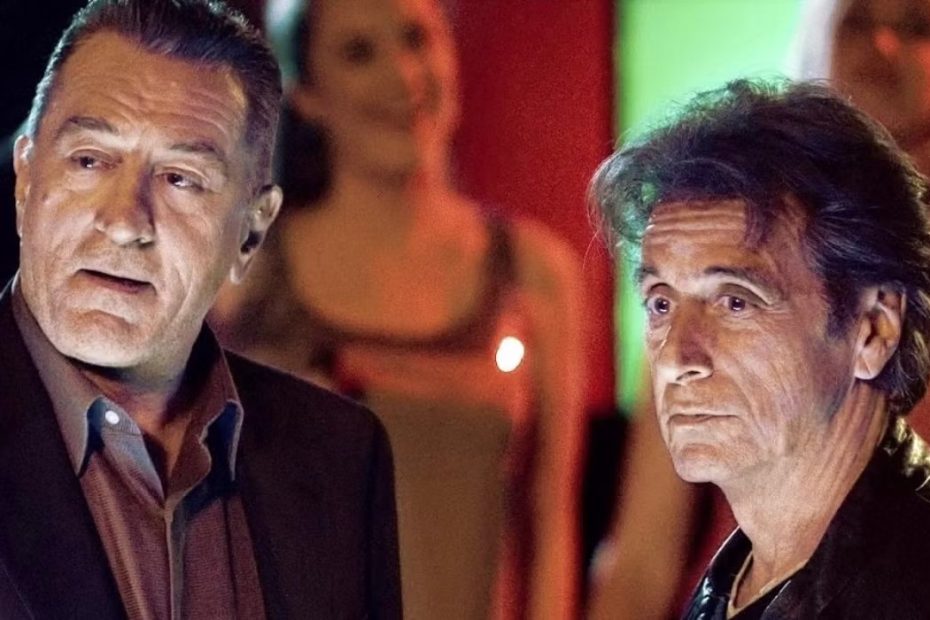Few actors in Hollywood history have defined the crime and casino genre like Robert De Niro and Al Pacino. Both legends of the screen have brought intensity, charisma, and psychological depth to their portrayals of mobsters, gamblers, and power players in worlds where luck and loyalty can turn on a dime. Yet when it comes to mastering the casino archetype—that volatile blend of ambition, control, and moral corrosion—one question persists: who did it better?
De Niro: The Calculated King of the Casino Floor
Join the PERA (Personal Entertainment Research Assistant) waitlist.
The World's Most Indispensable Movie App
The RunPee app tells you the best times to
run & pee during a movie
so you don't miss the best scenes.
Download the RunPee app.
100% free (donation supported)
Robert De Niro’s role as Sam “Ace” Rothstein in Martin Scorsese’s Casino (1995) is often considered the definitive portrayal of the casino world. Based on a real-life figure, De Niro’s Ace is a perfectionist gambler turned casino manager who believes he can control chaos through precision. Every frame captures his obsessive eye for detail—the shine on the chips, the placement of the cameras, the cut of a gambler’s suit. De Niro builds Ace not as a hot-blooded criminal, but as a man of numbers and discipline whose downfall comes from emotional betrayal rather than professional misstep.
In Casino, De Niro personifies the house itself: calm, watchful, and ultimately unbeatable—until the game changes. His performance is about the illusion of control. He rules Las Vegas not with violence, but with intellect. Through De Niro, Scorsese transforms the casino into a metaphor for America’s golden promise—rigged, glittering, and doomed to implode under its own greed. Few actors could capture that level of cold authority with such authenticity. It’s not just a role; it’s a masterclass in restraint and power.
What people are saying
about the RunPee app.
Best app ever!
RunPee is the only app we use before movies and afterward. not only does RunPee tell you when it’s a good time to leave the theater, kids these days ask if there’s anything during/after the credits, and RunPee lets parents know when there might be some thing that a kid might miss!
RunPee has tidbits, ratings, leave the theater times, and lengths. This is THE VITAL APP for watching any movie!
We used it when my wife was pregnant, and we have recommended it to every pregnant gal we know! How else can you enjoy a movie when you have to go out so often?!
View all reviews
Apple App Store | Google Play Store
Download RunPee app
For those fascinated by the allure of gambling and want to explore the modern version of casino culture, platforms like https://casinosanalyzer.com/free-spins-no-deposit/for-existing-players offer a glimpse into how today’s players chase luck through bonuses and free spins—echoing the same risk-and-reward dynamics De Niro embodied on screen.
Pacino: The Wild Card of the Underworld
Al Pacino, on the other hand, represents the opposite pole of the casino archetype: volatility. If De Niro is the house, Pacino is the gambler. In films like Scarface (1983), The Godfather Part III (1990), and later Ocean’s Thirteen (2007), Pacino embodies characters driven by excess, impulse, and theatricality. His casino persona, especially as Willy Bank in Ocean’s Thirteen, oozes flamboyant arrogance. Pacino turns the casino boss into a spectacle—someone who feeds on power and spectacle alike.
While Ocean’s Thirteen is lighter in tone than Casino, Pacino’s performance channels the darker energy he’s refined over decades. His characters are creatures of appetite. In The Godfather Part III, Michael Corleone’s moral decay mirrors that of a man gambling with fate itself. By the time he’s older and broken, you see the casino archetype in a tragic form: the player who can’t walk away from the table. Pacino’s intensity, voice, and expressive chaos make his performances unforgettable, even when they veer into operatic territory.
The Art of Restraint vs. the Art of Explosion
What separates De Niro and Pacino in the casino context isn’t just their style—it’s their philosophy of performance. De Niro plays from the inside out, building layers of subtlety until the smallest twitch of an eyebrow feels volcanic. Pacino plays from the outside in, commanding the frame with energy that feels unpredictable, dangerous, and alive.
In Casino, De Niro’s quiet collapse mirrors the disintegration of Vegas itself—a city trading loyalty for spectacle. Pacino’s casino characters, however, thrive on that spectacle. Whether he’s delivering fiery monologues or flashing that devilish grin, Pacino turns every scene into a gamble between genius and madness.
Verdict: Who Mastered It Better?
Ultimately, the answer depends on how you define “mastery.” If the casino archetype means control amid chaos, De Niro reigns supreme. His Sam Rothstein remains the blueprint for how to portray the intelligence, glamour, and inevitable downfall of the man who runs the house. His precision and realism set a standard that few have matched since.
But if the casino archetype is about risk, allure, and self-destruction, Pacino’s unpredictability gives him the edge. He captures the feverish heart of the gambler—the one who can’t resist one last spin of the wheel, no matter the cost.
Both actors, in their own way, have immortalized different sides of the casino mythos. De Niro built the palace; Pacino burned it down. And in that eternal duel between order and chaos, the real winner might just be the audience.






